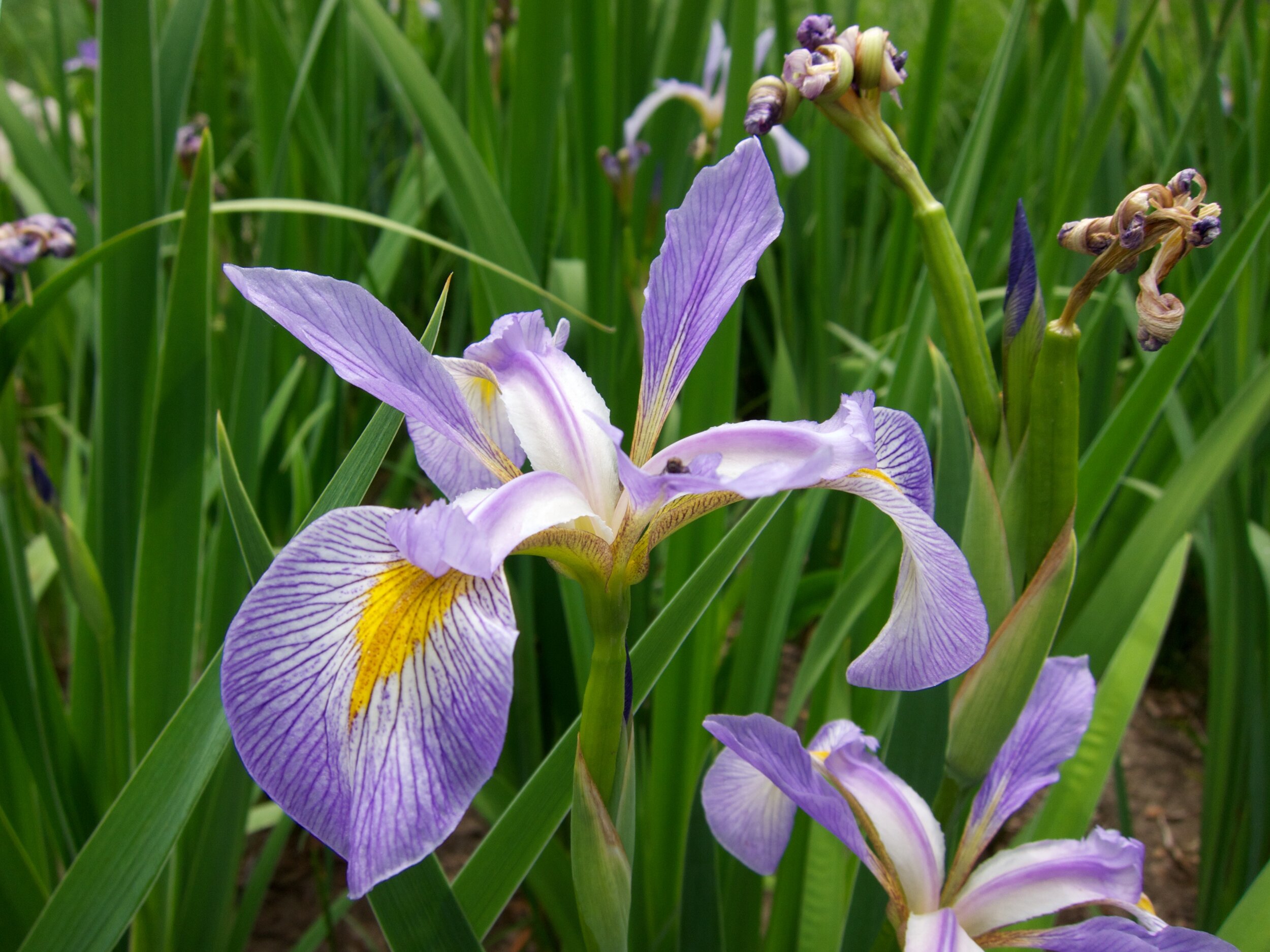The Abbeville iris (Iris nelsonii) is a very special plant. It is the rarest of the so-called “Louisiana Irises” and can only be found growing naturally in one small swamp in southern Louisiana. If you are lucky, you can catch it in flower during a few short weeks in spring. The blooms come in a range of colors from reddish-purple to nearly brown, an impressive sight to see siting atop tall, slender stems. However, the most incredible aspect of the biology of this species is its origin. The Abbeville iris is the result of hybridization between not two but three different iris species.
When I found out I would be heading to Louisiana in the spring of 2019, I made sure that seeing the Abbeville iris in person was near the top of my to-do list. How could a botany nut not want to see something so special? Iris nelsonii was only officially described as a species in 1966. Prior to that, many believed hybridization played a role in its origin. Multiple aspects of its anatomy appear intermediate between other native irises. It was not until proper molecular tests were done that the picture became clear.
The Abbeville iris genome contains bits and pieces of three other irises native to Louisiana. The most obvious parent was yet another red-flowering species - the copper iris (Iris fulva). It also contains DNA from the Dixie iris (Iris hexagona) and the zig-zag iris (Iris brevicaulis). If you had a similar childhood as I did, then you may have learned in grade school biology class that hybrids are usually biological dead ends. They may exhibit lots of beneficial traits but, like mules, they are often sterile. Certainly this is often the case, especially for hybrid animals, however, more and more we are finding that hybridization has resulted in multiple legitimate speciation events, especially in plants.
Iris fulva. Photo by Richard licensed under CC BY-NC-ND 2.0
Iris hexagona. Photo by beautifulcataya licensed under CC BY-NC-ND 2.0
Iris brevicaulis. Photo by peganum licensed under CC BY-SA 2.0
How exactly three species of iris managed to “come together” and produce a functional species like I. nelsonii is interesting to ponder. Each of its three parent species prefers a different sort of habitat than the others. For instance, the copper iris is most often found in seasonally wet, shady bottomland hardwood forests as well as the occasional roadside ditch, whereas the Dixie iris is said to prefer more open habitats like wet prairies. In a few very specific locations, however, these types of habitats can be found within relatively short distances of each other.
Apparently at some point in the past, a few populations swapped pollen and the eventual result was a stable hybrid that would some day be named Iris nelsonii. As mentioned, this is a rare plant. Until it was introduced to other sites to ensure its ongoing existence in the wild, the Abbeville iris was only known to occur in any significant numbers at one single locality. This necessitates the question as to whether or not this “species” is truly unique in its ecology to warrant that status. It could very well be that that single locality just happens to produce a lot of one off hybrids.
In reality, the Abbeville iris does seem to “behave” differently from any of its parental stock. For starters, it seems to perform best in habitats that are intermediate of its parental species. This alone has managed to isolate it enough to keep the Abbeville from being reabsorbed genetically by subsequent back-crossing with its parents. Another mechanism of isolation has to do with its pollinators. The Abbeville iris is intermediate in its floral morphology as well, which means that pollen placement may not readily occur when pollinators visit different iris species in succession. Also, being largely red in coloration, the Abbeville iris receives a lot of attention from hummingbirds.
Although hummingbirds do not appear to show an initial preference when given the option to visit copper and Abbeville irises at a given location, research has found that once hummingbirds visit an Abbeville iris flower, they tend to stick to that species provided enough flowers are available. As such, the Abbeville iris likely gets the bulk of the attention from local hummingbirds while it is in bloom, ensuring that its pollen is being delivered to members of its own species and not any of its progenitors. For all intents and purposes, it would appear that this hybrid iris is behaving much like a true species.
As with any rare plant, its ongoing survival in the wild is always cause for concern. Certainly Louisiana is no stranger to habitat loss and an ever-increasing human population coupled with climate change are ongoing threats to the Abbeville iris. Changes in the natural hydrologic cycle of its swampy habitat appear to have already caused a shift in its distribution. Whereas it historically could be found in abundance in the interior of the swamp, reductions in water levels have seen it move out of the swamp and into ditches where water levels remain a bit more stable year round. Also, if its habitat were to become more fragmented, the reproductive barriers that have maintained this unique species may degrade to the point in which it is absorbed back into an unstable hybrid mix with one or a couple of its parent species. Luckily for the Abbeville, offspring have been planted into at least one other location, which helps to reduce the likelihood of extinction due to a single isolated event.



